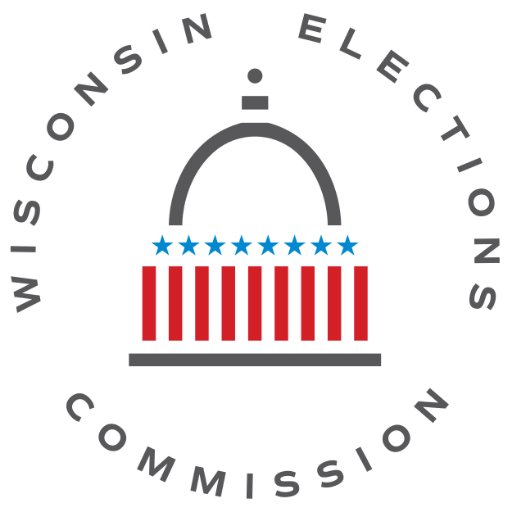How Votes Will Be Counted in the Nov. 8 Election
MADISON, Wis. – Wisconsin’s local election officials will be working late on Election Night to deliver unofficial election results to the public and the news media, according to the Wisconsin Elections Commission.
WEC Administrator Meagan Wolfe, who serves as Wisconsin’s chief election official, noted that often unofficial results aren’t known until the early hours of the next day after an election, or sometimes later.
Here are some important things to know about what will happen Tuesday after the polls close at 8 p.m.
Counting and Reporting Unofficial Results on Election Night
Election officials do not “call” elections on Election Night. Wisconsin has never had a statewide system for reporting unofficial results on Election Night, and there is no central official website where results will be reported. Most of the unofficial results the public sees on Election Night and in the following days come from the Associated Press and other media reports.
For decades, the AP has collected unofficial results from county clerks’ offices and distributed totals to its member newspapers and radio and TV stations. In recent years, other news organizations have also begun collecting and reporting unofficial Wisconsin results. Election Night declarations of victory by a candidate are never based on official results but instead rely on incomplete results that are available at the time. Winners are not official until the results are certified, which by Wisconsin state law happens on December 1.
For members of the public and the media who want detailed unofficial results directly from county clerks’ offices, the WEC will provide links to the 72 county clerk websites at the following link: https://elections.wi.gov/clerks/directory/county-websites
The link will also be posted on the homepage of the WEC’s website once the polls have closed: https://elections.wi.gov.
“There are three steps to Wisconsin’s certification process,” Wolfe said. “The first step starts at the polling place.”
Once all ballots have been processed and the polls are officially closed, the poll workers will convene what is known as the board of local canvassers. This is a public meeting, and the media and public are welcome to attend. The voting equipment will print a results tape, which will be read aloud, announcing the vote totals for that polling place.
Municipal clerks provide unofficial results to their county clerks, who will post them to the county’s website. Municipal clerks must report unofficial results to the county clerk within two hours of the results being tabulated, and county clerks must post the results within two hours of receiving them from the municipal clerk.
Central Count Absentee Ballot Processing
The results may come in differently for 38 cities, villages and towns that count all their absentee ballots at a central facility. Several large cities including Milwaukee, Green Bay, Kenosha, Racine and Wausau count their absentee ballots centrally. A full list of the municipalities which use central count can be found here: https://elections.wi.gov/clerks/guidance/central-count-absentee.
It is important for the media and the public to understand the difference between municipalities that count absentee ballots at polling places and those that count at central locations because unofficial Election Night results from central count municipalities may not all arrive in the county clerk’s office at the same time.
Wolfe said this delay in reporting has caused some confusion in the past, and the WEC has worked closely with county clerks this year to ensure that visitors to their websites receive clear notices about whether the unofficial results are complete.
Further Certifying the Vote
The second step of the certification process is at the county level. Each county has a board of canvassers which must start meeting by 9 a.m. on Nov. 15 to begin certifying official results. These are also public meetings. The county board of canvassers is made up of the county clerk and two other people. County clerks are elected on a partisan basis, so one of the other two members must be from the opposite party of the county clerk. The deadline for counties to certify is November 22.
After a recount, or if there is no recount, the third step of the certification process begins. The WEC staff receives results from the counties, rechecks all the counties’ numbers and combines them to arrive at totals for legislative, congressional, and statewide races. The third step also includes random post-election audits of voting equipment used to tally votes in 10% of the reporting units statewide. The day after the election, the WEC will randomly select approximately 180 reporting units for audits. The municipal clerks in these jurisdictions must then hand count all the paper ballots twice to make sure the total matches the results from the voting equipment. These audits are also open to the public. The statutory deadline for the Chair of the WEC to certify statewide results is December 1.
NOTE: This press release was submitted to Urban Milwaukee and was not written by an Urban Milwaukee writer. While it is believed to be reliable, Urban Milwaukee does not guarantee its accuracy or completeness.
Recent Press Releases by Wisconsin Elections Commission
WEC Schedules Public Hearing on Proposed Administrative Rules
Dec 3rd, 2025 by Wisconsin Elections CommissionPreliminary Hearing on Proposed Rules for Voting Equipment/Ballot Security, Training of Election Inspectors and Special Voting Deputies






















